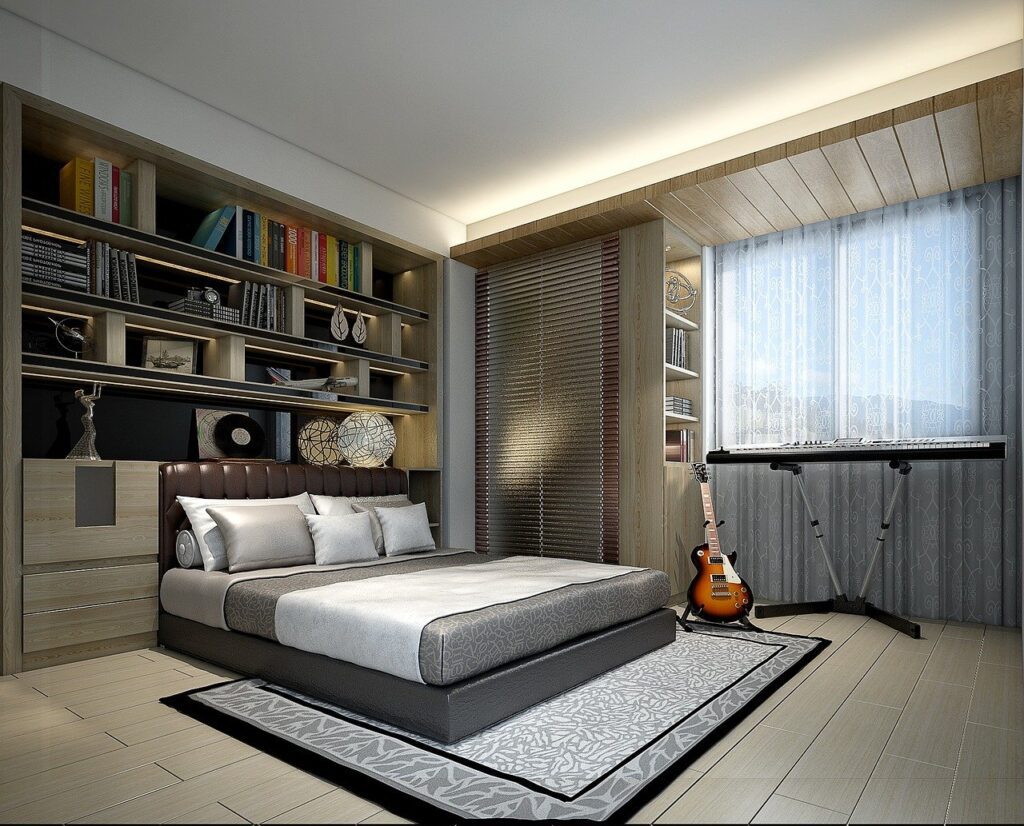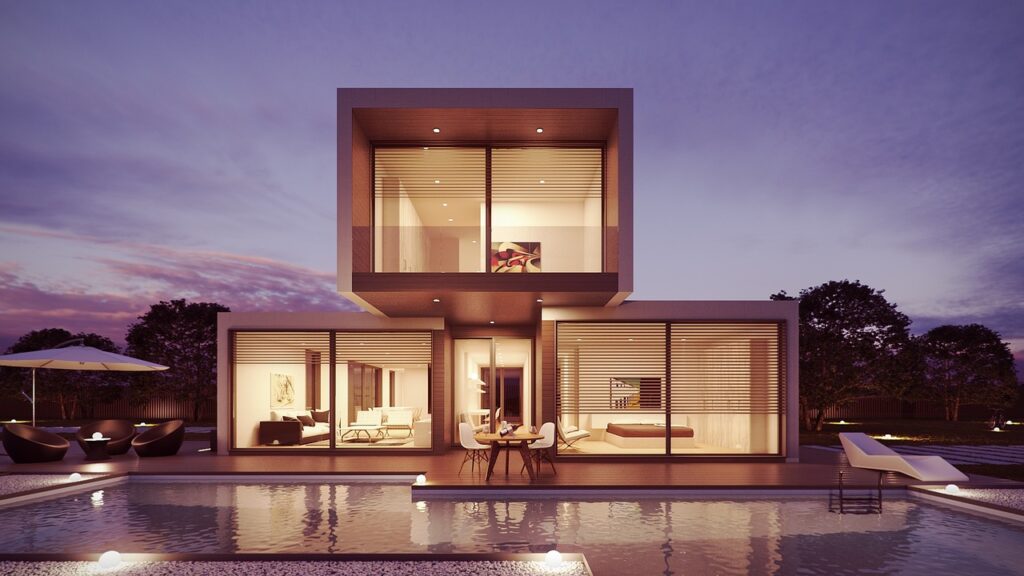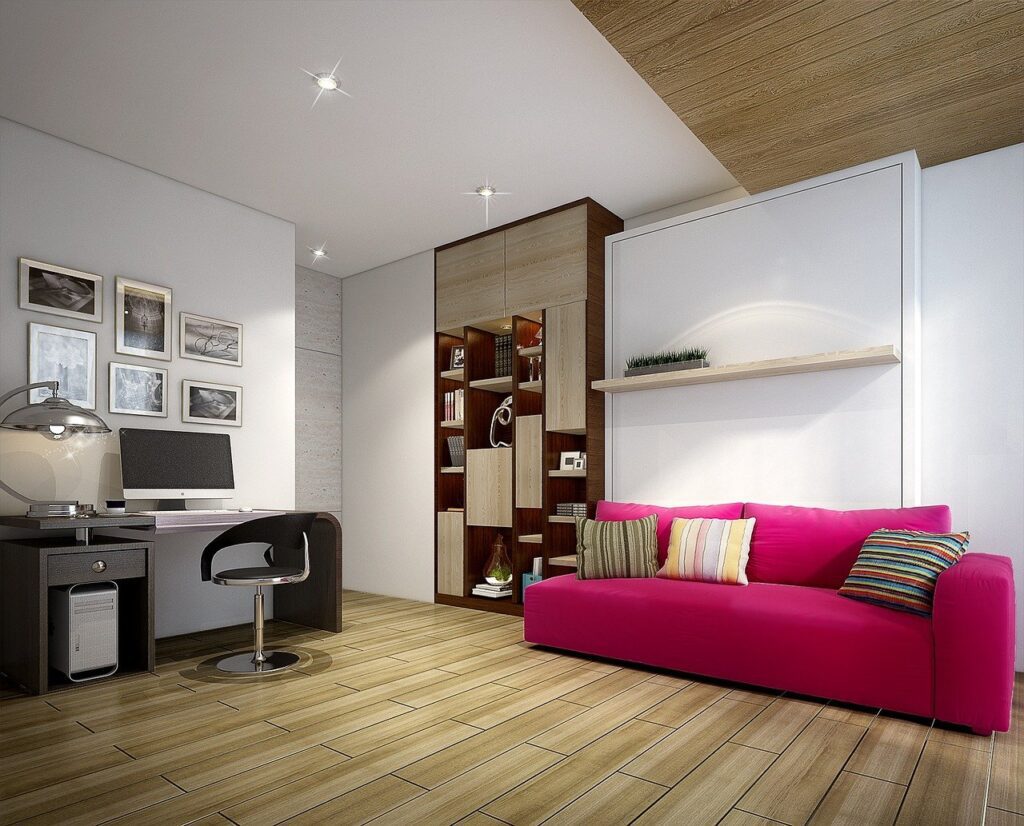Did you know that projects utilizing 3D rendering, photorealistic visuals, and virtual tours experience a staggering 70% increase in client engagement? Elevate your projects and products to new heights by harnessing the power of cutting-edge technology. With 3D rendering, transform your design projects and visualizations into captivating visual representations that leave a lasting impact on your audience. Say goodbye to traditional limitations and welcome a world where artists, design projects, and photorealistic visuals know no bounds.
Unlock endless possibilities, enhance collaboration, and streamline decision-making processes with the seamless integration of 3D rendering and design for architects, developers, artists, and across various industries. From architectural marvels to product prototypes, revolutionize the way architects showcase their design projects and 3d renderings. Stay ahead of the curve and revolutionize your projects with the transformative capabilities of 3D rendering and design.
Understanding Architectural Rendering
Basics And Importance
Architectural rendering is the process of creating two-dimensional or three-dimensional images, showcasing the attributes of a proposed architectural design by architects. It plays a crucial role in project development by providing architects and stakeholders with a clear visualization of the final structure through 3D renderings. This visualization, including 3D renderings, bridges the gap between abstract design ideas and tangible reality, allowing architects to make better decisions throughout the project lifecycle. Architectural rendering enhances client satisfaction by enabling them to fully comprehend and appreciate the proposed design before construction begins.
Real Estate Impact
Architectural rendering significantly impacts real estate presentations by offering realistic visualizations of properties that are yet to be built. These renderings, created by architects, help in attracting potential investors by showcasing the design concept, aesthetics, and functionality of a property in a compelling manner. They revolutionize property showcasing in real estate by allowing developers to present projects with photorealistic images that resonate with buyers’ preferences and expectations.
Interior Design Role
Interior 3D rendering is vital in the design process as it provides detailed visualizations of interior spaces, including furniture, lighting, and decor elements. It optimizes client communication by enabling designers to effectively convey their ideas and concepts through realistic 3D render images. Interior rendering, including 3D design concept, plays a key role in ensuring that clients have a clear understanding of how their space will look once completed, leading to better decision-making and satisfaction.
Marketing Power
Architectural rendering serves as a powerful tool in enhancing marketing strategies for architectural and real estate projects. It elevates marketing efforts by presenting visually appealing 3D render representations of designs that captivate potential clients. The engaging nature of architectural rendering helps in attracting clients by offering them a glimpse into the future aesthetics of a project. Moreover, architectural rendering contributes to boosting sales and conversions by instilling confidence in clients regarding their investment decisions and saving time.
Types Of Architectural Renderings
Exterior Views
Exterior renderings play a crucial role in architectural visualization by presenting the project’s outer appearance. They showcase architectural features like facades, windows, and landscaping. These 3d render views help clients visualize how the building will fit into its surroundings.
When it comes to architectural projects, exterior renderings are essential for conveying the building’s design language and materials. They provide a realistic 3D render representation of the structure within its environment. Clients can better understand the aesthetics and functionality of the project through these 3d render visualizations.
- Exterior renderings highlight architectural features
- Showcases materials and design concepts effectively
Interior Details
Interior rendering focuses on bringing interior spaces to life, emphasizing layout, lighting, and textures. These details play a significant role in communicating the designer’s vision. Interior renderings help clients envision themselves within the space and understand how different elements come together to create a cohesive design.
In architectural designs, interior details are crucial for showcasing furniture arrangements, color schemes, and spatial planning. They allow stakeholders to experience the atmosphere and functionality of each room before construction begins using 3D renders.
- Emphasizes interior spaces and design concepts
- Communicates layout, lighting, and textures effectively
Aerial Perspectives
Aerial renderings provide a unique perspective by offering a bird’s-eye view of architectural projects. These 3d perspectives are valuable for understanding the site layout, surrounding buildings, and overall scale of the project. Aerial views help architects evaluate how different structures interact with each other spatially.
In architectural renderings, aerial perspectives are instrumental in demonstrating circulation patterns, building relationships, and site context. They enhance project visualization by providing a comprehensive 3D render overview from above.
- Offers bird’s-eye view of buildings
- Emphasizes structure relationships and site context effectively
Tools For 3D Rendering
Modeling Software
3D modeling software plays a crucial role in creating intricate and detailed models for various projects, rendering them. These 3D software tools enable designers to craft virtual representations of objects, environments, or characters with precision and render. Accuracy and attention to detail are paramount when using modeling software as they serve as the foundation for the final renders.
Having robust modeling software is essential, especially in architectural projects where every element needs to be meticulously designed and visualized. Architects rely on these tools to develop accurate blueprints that guide the entire construction process, ensuring that every aspect is accounted for in the final design.
Rendering Engines
Rendering engines are instrumental in transforming 3D models into realistic visuals that mimic real-world scenarios. These engines simulate lighting conditions, materials, textures, and shadows to bring the virtual environment to life. By leveraging advanced algorithms, rendering engines enhance the visual appeal of architectural renders by adding depth and realism.
The primary function of rendering engines is to bridge the gap between a raw 3D model and a visually stunning representation. They optimize the overall appearance of architectural designs by refining details such as reflections, refractions, and ambient occlusion. In essence, rendering engines elevate the quality of renders by infusing them with lifelike elements.
The Rendering Process
Concept To Model
Architectural rendering begins with conceptualization and progresses to detailed 3D modeling for visualization. Each step, from ideation to model creation, is crucial for achieving high-quality visuals. Transitioning design concepts into detailed models ensures accuracy and realism.
Lighting And Texture
Lighting and texturing are vital elements that bring depth and realism to architectural renders. Proper lighting techniques significantly impact the final render quality by creating ambiance and highlighting key features. Textures play a crucial role in enhancing the visual appeal of architectural designs, adding realism and detail.
Final Output
A high-quality, photorealistic architectural visual is characterized by realism, accuracy, and attention to detail. The final output plays a pivotal role in effectively communicating design concepts to clients, stakeholders, and investors. The final output serves as a powerful tool for post-project marketing efforts, showcasing the project’s potential and attracting future opportunities.
Maximizing Project Potential
Expert Strategies
Expert strategies play a crucial role in optimizing architectural rendering processes. By leveraging the latest software and technologies, professionals can enhance the quality of design projects. Implementing efficient workflows and collaboration tools ensures a seamless development process for stakeholders.
- Utilize cutting-edge software tools
- Collaborate effectively with team members
- Streamline workflow processes for maximum efficiency
Industry best practices are essential for achieving high-quality architectural visuals. By following standardized procedures and quality control measures, designers can deliver exceptional results that exceed client expectations. Regular training and skill development are key to staying updated with industry trends.
Visualization Techniques
Advanced visualization techniques are instrumental in creating immersive project experiences. By incorporating photorealistic elements and interactive features, designers can bring design concepts to life. These techniques not only enhance project presentations but also aid in effective communication with clients and stakeholders.
- Incorporate photorealistic elements
- Use interactive features for enhanced presentations
- Improve communication through visual storytelling
Visualization techniques are vital for creating engaging presentations that showcase the full potential of design projects. By utilizing 3D modeling and animation, designers can provide clients with a realistic preview of the final outcome. These techniques help in capturing the essence of the project vision and garnering support from stakeholders.
Early Issue Identification
Early issue identification is critical in architectural rendering to prevent costly errors during the development phase. By conducting thorough reviews and quality checks at each stage of the project, teams can address issues promptly and ensure smooth progress. Timely identification of discrepancies leads to improved project outcomes and client satisfaction.
- Conduct regular reviews for quality assurance
- Address issues promptly to avoid delays
- Ensure alignment with client requirements for successful project delivery
Identifying issues early on not only saves time but also minimizes rework expenses associated with design changes later in the process. By fostering a culture of proactive problem-solving, teams can mitigate risks and deliver projects within budget and timeline constraints.
Client Communication Tips
Building Connections
Architectural rendering plays a crucial role in building connections between clients and designers. By showcasing realistic visualizations of projects, architects can effectively communicate their ideas to clients. This helps in aligning expectations and ensuring client satisfaction.
Collaboration is key in the design process, and architectural visualization facilitates this by providing a common ground for discussions. Clients can better understand design concepts, provide feedback, and feel more involved in the project. This collaborative approach fosters trust and transparency, leading to stronger relationships with potential clients.
Building connections through rendering not only enhances communication but also sets the foundation for successful projects. When clients feel understood and valued, they are more likely to be satisfied with the final outcome. This ultimately results in positive referrals and repeat business from customers who appreciate the seamless communication process.
Detail Discussion
Paying attention to details is paramount when it comes to architectural rendering. Every element, from textures to lighting, contributes to the overall realism of the visualization. Engaging in detailed discussions with clients helps ensure that their vision is accurately captured in the design.
Detailed discussions go beyond surface-level preferences; they delve into the core requirements of the project. By thoroughly understanding the client’s needs and expectations, architects can tailor their designs to meet specific criteria. This level of detail-oriented communication significantly impacts project outcomes positively.
In refining design concepts, detailed discussions play a crucial role in fine-tuning every aspect of the project. From color schemes to spatial arrangements, addressing even the smallest details leads to a more cohesive and polished final product. The iterative process of discussing and revising designs based on client feedback ultimately results in designs that exceed expectations.
Enhancing Attention To Detail
Techniques And Practices
Architectural rendering involves intricate attention to detail, ensuring a project’s success. By utilizing advanced software tools like Autodesk Revit and Lumion, designers can create realistic 3D models with precision. Incorporating textures, lighting effects, and accurate scale representations enhance the visual appeal of architectural renderings.
To elevate the quality of architectural renderings, professionals often employ techniques such as photorealistic rendering and virtual staging. These methods involve meticulous attention to detail in texture mapping, lighting adjustments, and shadow placements. By focusing on these aspects, designers can produce lifelike renderings that closely resemble the final built structure.
Implementing industry-standard practices like following the principles of composition, color theory, and spatial arrangement significantly impacts the overall quality of architectural renderings. By adhering to these best practices, designers ensure coherence in their designs, creating visually appealing and cohesive 3D models. Incorporating elements of realism through accurate material representation and environmental context adds depth and authenticity to renderings.
Pros:
- Achieve high-quality visualizations
- Enhance client satisfaction
- Improve project understanding
Cons:
- Time-consuming process
- Requires advanced technical skills
Time Management In Rendering Projects
Strategies And Optimization
Efficient time management is crucial in maximizing a project’s potential through 3D rendering and design. By implementing strategies for optimization, projects can meet deadlines and avoid unnecessary delays.
One key strategy is to establish a clear timeline with specific times allocated for each phase of the rendering process. This helps in prioritizing tasks and ensuring that the project progresses smoothly without any setbacks.
Another important aspect is identifying potential delays early on and having contingency plans in place to address them swiftly. By anticipating possible obstacles, project managers can mitigate risks and keep the project on track.
Utilizing the right type of rendering software can also significantly impact efficiency. Choosing software that aligns with the project requirements and team expertise can optimize workflows and reduce rendering times.
Incorporating automation tools into the rendering process can further enhance efficiency by streamlining repetitive tasks and freeing up time for more complex design aspects.
Key Takeaways And Summary
Enhance Visualization
3D rendering provides a comprehensive understanding of how a project will look before construction begins. It enhances visualization by creating realistic images.
Boost Credibility
Utilizing 3D design in projects boosts credibility and professionalism. Clients are more likely to trust detailed visualizations over traditional blueprints.
Save Money And Time
By using architectural rendering, projects can save money and time. Identifying design flaws early prevents costly changes during construction.
Optimize RAM Usage
When working with 3D rendering software, having sufficient RAM is crucial for smooth operation. Upgrading RAM can significantly improve rendering performance.
Focus On Details
Attention to details in 3D design is essential for achieving a high-quality final product. Small elements can make a big difference in the overall presentation.
Actionable Steps:
- Prioritize incorporating 3D rendering into your project workflow.
- Invest in quality rendering software for accurate visualizations.
- Collaborate closely with designers to ensure all details are captured effectively.
Summary
You’ve now grasped the essence of architectural rendering, explored various types and tools, delved into the rendering process, and learned how to maximize your project’s potential. By enhancing attention to detail, communicating effectively with clients, and managing time efficiently, you’re well-equipped to elevate your rendering projects. Remember, success lies in the balance between creativity and precision. Keep pushing boundaries, refining your skills, and staying updated with the latest trends in 3D rendering. Embrace challenges as opportunities for growth, and always strive for excellence in every project you undertake.
Frequently Asked Questions
1. What Is Architectural Rendering?
Architectural rendering is the process of creating 2D and 3D images to visualize and showcase architectural designs before they are built. It helps architects, designers, and clients to understand the project better.
2. How Can 3D Rendering Benefit My Project?
3D rendering brings your project to life with realistic visualizations, helping you make informed decisions, attract clients, and secure approvals. It enhances communication, saves time, and allows for modifications before construction begins.
3. What Tools Are Commonly Used For 3D Rendering?
Common tools for 3D rendering include software like Autodesk 3ds Max, SketchUp, Blender, and V-Ray. These tools offer a range of features such as modeling, texturing, lighting effects, and animation capabilities.
4. How Can I Effectively Communicate With Clients During The Rendering Process?
Maintain clear communication by setting expectations early on, providing regular updates, seeking feedback at key stages, and using visual aids like mood boards or concept sketches. Transparency and responsiveness build trust and ensure client satisfaction.
5. Why Is Attention To Detail Crucial In Architectural Rendering?
Attention to detail elevates the quality of renderings by capturing design intricacies accurately. It enhances realism, showcases craftsmanship, and demonstrates professionalism to clients. Small details can make a big difference in the overall impact of the visualization.

Transform Your Space With 3D Rendering And Design By Red White & Blue Construction!
Are you considering upgrading your home’s design in Lafayette, CA? Red White & Blue Construction is your premier choice for expert 3D rendering and design services! Specializing in meticulous planning and execution, we tailor our strategies to meet your specific needs and visions. Known for our expertise in 3D design, we are dedicated to transforming your space into a more stylish, functional, and modern environment. Every aspect of our work is carefully planned and executed to exceed your expectations. Our esteemed reputation throughout the Bay Area stands as a testament to our commitment to precision, quality, and the high standards we uphold in every project phase.
At Red White & Blue Construction, our goal is to do more than just update your design; we aim to enhance your entire home renovation experience. With our detailed planning, transparent pricing, and unparalleled customer service, choosing us for your 3D rendering and design needs means embarking on a smooth, efficient renovation journey. Opt for Red White & Blue Construction and take the first step towards a more stylish and functional home. Contact us today to get started!
Disclaimer
The materials available on this website are for informational and entertainment purposes only and not to provide advice. You should obtain advice concerning any particular issue or problem from a professional. You should not act or refrain from acting based on any content included in this site without seeking legal or other professional advice. The information presented on this website may reflect only some of the current building developments. No action should be taken in reliance on the information on this website. We disclaim all liability concerning actions taken or not taken based on any or all of the contents of this site to the fullest extent permitted by law.





